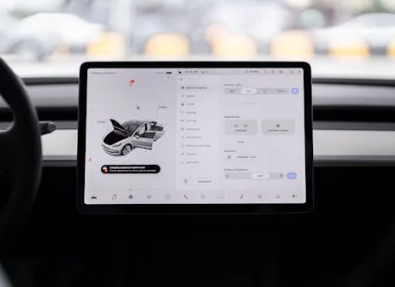Industrial LCDs: Conquering the Elements for Clear Displays
Introduction
In the modern industrial field, liquid crystal displays (LCDs) have become indispensable display devices. These screens play an important role in various industrial applications due to their advantages of high definition, low power consumption, and long lifespan. This article will delve into the basic principles, technical characteristics, application areas, and future development trends of industrial LCD screens.


Main text
Basic principles and structure
The core of industrial LCD screens is LCD technology. Liquid crystal is a substance state between solid and liquid, with unique optical properties. By controlling the arrangement of liquid crystal molecules, different brightness and color displays can be achieved. Industrial LCD screens typically use thin-film transistor (TFT) technology, which can provide higher resolution and contrast.
The working voltage of industrial LCD screens is very low, only requiring 2V-3V to start, and the working current is only a few microamperes, which makes them excellent in terms of energy saving. In addition, industrial LCD screens also have a long service life, and many models can achieve a display effect of 1080P.
Technical features and advantages
Industrial LCD screens fully consider the stringent requirements of industrial environments in their design and manufacturing. Compared with ordinary consumer grade LCD screens, it has a higher level of protection and stronger stability. For example, industrial LCD screens can still operate normally in extreme temperature, humidity, and dust environments.
Another significant feature of industrial LCD screens is their high resolution and fast response time. This enables operators to more easily identify and solve problems. In addition, industrial LCD screens also support touch screen technology, further enhancing the user's interactive experience.
Application Fields and Cases
Industrial LCD screens are widely used in multiple industries, including manufacturing, healthcare, transportation, and military. In the manufacturing industry, industrial LCD screens are used to monitor and control assembly lines, quality control, and inventory management processes. In medical equipment, industrial LCD screens are used to display patient information and medical data.
A typical example is the industrial touch LCD display in automation control systems. These displays not only provide high-definition display effects, but also play a key role in information exchange, operation control, and system management.
Future Development Trends
With the continuous development of technology, the technology of industrial LCD screens is also constantly advancing. The future development trends are mainly reflected in the following aspects:
1. High Performance : With the increasing demand for display effects, industrial LCD screens need to continuously improve their performance level to meet the needs of higher resolution, higher contrast, and higher color saturation.
2. Intelligence and Internet of Things : Industrial LCD screens will integrate more intelligent functions and Internet of Things technology to achieve remote monitoring and data analysis.
3. Environmental Protection and Sustainable Development: In the future, industrial LCD screens will pay more attention to environmental protection and sustainable development, using more efficient materials and technologies to reduce energy consumption and waste generation.
Conclusion
As an indispensable display device in modern industry, industrial LCD screens play an important role in various fields due to their high definition, low power consumption, long service life, and strong stability. With the continuous advancement of technology and the expansion of application fields, industrial LCD screens will continue to lead the development trend of industrial display technology.
Back